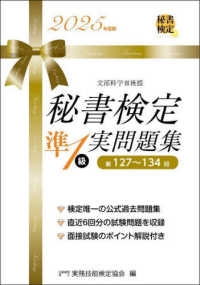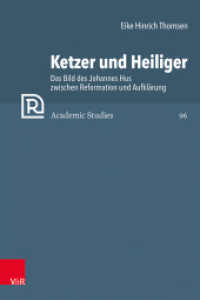Full Description
Completely revised and updated, "The World Guide, 11th edition" profiles every country on the planet. It is unique in combining social and developmental analysis with historical and political content. For students, teachers and readers of all levels, this accessible guide provides a refreshing world perspective. Drawing on United Nations and other mainstream data, "The World Guide" includes all the facts, history, political and economic analysis you would find in a conventional reference work. But it is unique in also offering information on the issues central to the lives of people in the Global South, such as child health, literacy, maternal mortality and land use. "The World Guide" is a South-North collaborative effort between the Third World Institute in Uruguay and the New Internationalist. With a clear, country-by-country format, it is the most accessible work of reference for development studies, comparative studies, travel research and fact-checking.The key features include: up-to-date information plus a complete history for every country of the world, including Montenegro, Palestine, Somaliland, West Papua and Western Sahara; clear, easy-to-use two-color layout; In Focus box showing at-a-glance information on each country's human rights, indigenous peoples, health, education and environment; 25 new reports on topical global issues such as green economics, energy scenarios, the gender gap, Latin American politics and security; the World in Figures - a comprehensive section of data and statistics on child health, literacy, maternal mortality, land use, public expenditure and other issues; and, tables of factual information on key issues such as debt, communications, corruption and trade, plus a unique guide to Sexual Minorities and the Law.
Contents
How to read The World Guide. 4 - 14 Preface. 15 Roberto Bissio. Staff / Acknowledgements. 16 section I: Global issues. 17 - 59 Hopes and fears The world according to... 60 The World Bank, UN Development Program and UNICEF Non-governmental organizations/campaigns. 61 - 62 section II: Countries. 65 - 584 History, society, politics, environment and main issues country by country. A basic bibliography. 585 - 586 Index. 587 - 592 section III: The whole world in figures. 593 - 623 All the countries; their main statistics.








